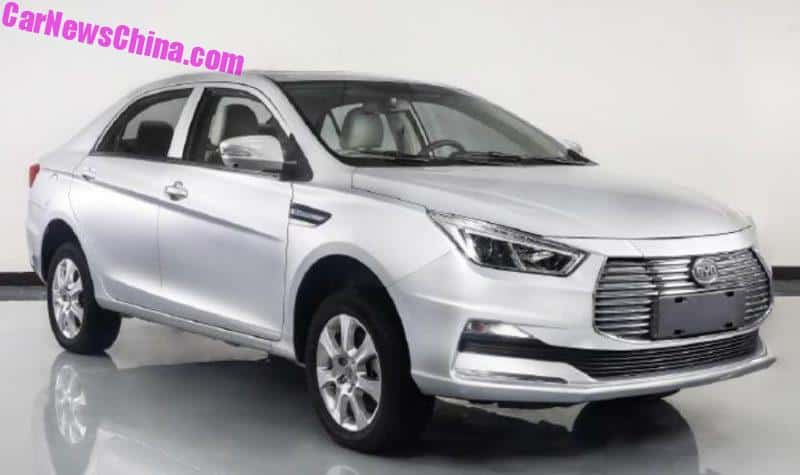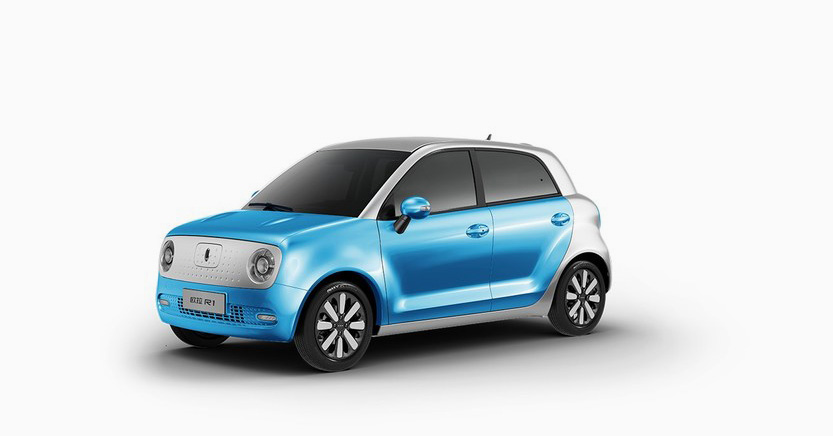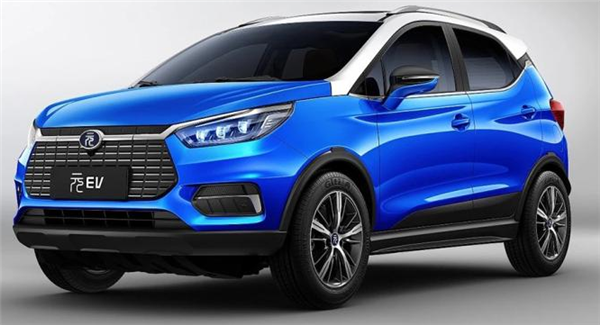BAIC
EU-Series reaches 13,000 units (& the Tesla Model 3 scores 5,000 deliveries)
March saw the Chinese plugin market surpass 110,000
units, up 86% YoY, while the mainstream market was down 7% last month, allowing
the March PEV share to reach 5.8%, and pulling the PEV market share to 5.1%, frankly
above the 2018 result (4.2%).
With all this continued growth, we could see sales
double this year, surpassing the 2 million mark, making some 60% of all global
PEV sales in 2019.
With symbolic export numbers, the domestic market is
more than enough to absorb the current Chinese production, while foreign OEMs are
starting to tackle the current seismic changes, dragged into electrification by
the new PEV quotas, with foreign brands total share now having 8% of the market.
Of this (small) cake, 3% belong to Volkswagen, 2% to Tesla,
while the remaining manufacturers share the remaining 3%.
In March, the headlining news were the BAIC
EU-Series hitting #1, with 13,000 units, while the Tesla Model 3 reached the
Top 5, with some 5,300 deliveries.
Here’s March
Top 5 Best Selling models individual performance:
#1 – BAIC EU-Series: After the record 12,561 units
of December, allowing it to be that month Best Seller, BAIC’s electric sedan is
back on top, with a record 12,983
units being delivered last month, beating its BYD e5 nemesis. The revised design and improved specs (215 hp, 416 kms /
260 mi NEDC, US $32,500) allows it to remain a popular choice and resist the
BYD Blitzkrieg (the EC-Series can’t
say the same…), so the sedan seems to be Beijing Auto’s main bet for 2019.
#2 – BYD Yuan EV: We all knew that BYD’s Baby Crossover was destined for success,
and with a new 58 kWh version now being delivered, the small Crossover hit a
near-record 10,021 deliveries in March.
The maker Star Player is living up to
expectations, eating everybody’s
lunch, on the way. With a 30,000-long waiting list, demand is no problem,
depending more on BYD’s ability/willingness to make them in large volumes (The
Tang is more profitable…), than anything else. With unrivalled specs (58 kWh
battery, 410 kms/255 mi NEDC range, 163 hp motor), and price (25,000 USD), this
is shaping up to be this year strongest candidate for the Best Seller title.

#3 – BYD e5: BYD’s bread and butter electric sedan, a favorite among
taxi-drivers, registered 8,083 units
in March, the oak tree of the BYD
lineup has competitive specs (61 kWh, 405 kms / 253 mi range NEDC, 218 hp), considering
the price (CNY 220,650 / USD 34,600). With a new, attractive design (finally!),
the nameplate is set to continue its brilliant work as the lesser known team
member of an All-Stars-rich Shenzhen Warriors Team...

#4 – Tesla
Model 3: The
much-anticipated landing of the midsize sedan in China happened with a bang,
having delivered some 5,300 units, the best score ever for a foreign model in
China, allowing it to reach the 4th spot in March, a first for any
foreign model in this market. At this point, the Tesla nameplate is far from
the domination held in North America or Europe, but it seems to be the only
foreigner being able to run at the same pace of the local Best Sellers. It’s
like LeBron James, undisputed king in the Eastern Conference, but when on the
Western Conference…It’s a different ball game.
#5 – BYD Tang PHEV: The second-generation Tang continues
to sell like hot cakes, registering 4,763
registrations in March. Sales should continue strong for BYD’s successful flagship,
although the just landed Tang BEV should prevent it from hitting new sales records.
As for the current Tang PHEV specs, BYD’s Midsize
SUV saw the battery grow to 24 kWh, originating an increased 100 kms range
/ 62 mi NEDC (around 70 kms / 44 mi real world), while on the power department,
things have stayed the same, but with 500 hp and 0-100 kms/h in less than 5
secs, one can’t really say it was underpowered.... All for CNY 279,800 /
$40,816.
 |
| Great Wall Ora R1 EV |
2019 ranking
The market
is dynamic as ever, with plenty of models scoring record results, like the BAIC
EU-Series registering a record 12,983 units, allowing it to jump to the 2nd
spot, while both Great Wall Ora’s continue their seemingly unstoppable rise,
with the singular #13 Great Wall Ora
iQ5 EV crossover scoring 3,029 units, while the Smart small R1 EV is now
#9, thanks to a record 4,002 deliveries.
Another
interesting feature is that we now have two foreign nameplates in the Top 20,
with the Tesla Model 3 landing directly in #16, while the VW Passat GTE is now
#17, thanks to a record 2,731 units.
The Nio ES8
dropped from the Top 20, to #21, but it is still the best-selling full-size
nameplate in the PEV ranking.
Looking at the
manufacturers ranking, BYD (24%) is a comfortable leader, thanks to the success
of the Yuan and Tang (and the #4 e5, and the #12 Qin, and the #18 Song…it’s a
true BYD fest), while below it, while SAIC (8%, down 4%) holds on to the 2nd
Spot, ahead of BAIC (7%, up 2%), that re-joined the podium, dropping Geely (6%,
down 2%) to 4th, while Great Wall (5%) is rising from obscurity to a
relevant spot (#5).




Tesla just reported a 1q loss of over USD 700 mill. This is now the critical phase to show that a mass market on electric vehicle market is possible. Model S and Model X sales steeply slumped. Competition in this field is now much bigger. The market needs now much better and cheaper akkus for becoming a mass market.
ReplyDeleteWe have already seen that a mass market BEV is possible with the Nissan Leaf and a mass market PHEV with the Toyota Prius or are you saying you would like for Tesla to show they can sell a mass market EV?
DeleteMost of that loss is attributable to deliveries in Q1 being lower than what is needed to make Tesla profitable at the current size of the organisation. That delivery slump is mostly a result of logistics and other temporary challenges, though. They seem confident the numbers will be back to normal in Q2. (Bears keep claiming that there is a permanent demand shortfall -- but I don't believe that, since Tesla is pretty explicit about this, and lying about something like that would get them in serious legal trouble...)
DeleteHaving said that, it's also true that they lowered Model 3 prices to match comparable combustion cars, while they haven't yet reached the needed production efficiency to achieve the target gross margin at these prices. Efficiency is improving each quarter though, while average selling prices seem to have stabilised now at a much higher level than originally expected -- so it's only a matter of time to get there...
Regarding battery prices, I believe the importance of this is being overestimated nowadays. (BTW, there is no such word as "akku" in English. The term "accumulator" does exist, but I have never seen it used in the context of rechargeable batteries.) At current battery prices, everything else being equal, it should already be possible to sell mid-range BEVs (~50 kWh) at less than $5,000 price premium over entry-level gasoline cars -- while most existing BEV offerings still have a >$10,000 price premium... Although battery cost obviously still is -- and will continue to be -- an important competitive advantage, it's no longer the major reason for EVs being too expensive.
Other factors are production scale; the lack of dedicated, fully optimised BEV platforms created from scratch; and failure to offer a wide range of power train and other options for each model, in order to be able to achieve a low entry price while keeping average margins profitable. Thus far, Tesla was the only maker doing all this. (Which is why Model 3 is the only EV competitive on price with comparable combustion cars...) The first legacy maker to get it right seems to be VW, with their MEB-based models coming next year. And it shows in their pricing: they are promising that these will cost the same as diesel models of comparable power output. (Which is a couple thousands more than gasoline models of the same power level -- in line with my claim of what the price difference should be at current battery prices.)
It should be noted that EVs do not need to reach cost parity with gasoline cars to be ready for the masses. Before Dieselgate, most Europeans were willing to pay the premium for diesel engines in return for fuel cost savings. With EVs offering much larger cost savings, there is no reason to believe people won't be willing to pay as much for them as for diesel cars...
Losses are related to ramp production and longer logistics. S&X models sales drop are production related, because it has better powertrain.
DeleteNorway April statistics show already a steep slump of Model 3 sales of -82%!!!. eGolf sales in Norway are at the same level as Model 3. Also Netherlands Model 3 sales slumped -76%. Elon Musk has rightly seen that it is possible to enter the EV market over the premium segment, where economics do not matter. He did not increase the inventive level of EV and other companies can do the same what Tesla does. Self driving is what Musk can show he can do, yet the issue here is insurance.
DeleteApril deliveries thus far have been only cars that arrived in Q1 but didn't make their way to the buyers before. Only now new ships are beginning to arrive. Early Q2 deliveries are thus in no way indicative of orders.
DeleteSure, we shouldn't count on a repetition of the March peak -- but beating e-Golf in Q2 should be no trouble.
And no, other companies cannot do the same. They still haven't even managed to match the 2012 Model S...
Jose,
ReplyDeleteWhen will BYD start production and deliveries of:
BYD Tang EV600
BYD e1
Cheers
I recently saw some pictures of the first e1-handovers in Beijing, so sales of that have started in April. I believe tang ev600 has also started, at least many dealers have demo models available.
DeleteThe first Tang EVs were delivered in March, but i didn't knew the e1 was already being delivered in April.
DeleteIt looks BYD will have another smashing month!
From the posted data, Q12019 standings are:
ReplyDelete1st BYD Auto with 64652 registrations
2nd BAIC Motor with 19343 registrations
3rd SAIC Motor with 18871 registrations
4th Geely Auto with 16037 registrations
5th Great Wall Motors with 13996 registrations
BYD alone shows why the Model 3 will not do well in China and building a factory there is just a waste of money. If you look at the number of cars sold just in the top 5 you will see that makes up 83,880 units. Q2 should give us an idea of the organic demand for the Model 3 in China. I say less than 20K.
DeleteMatt, was thinking about the same what is the stable demand for midel 3 in China. Until it will be shipped from US it is very expensive so it will be subdued but after giga 3 is complete model 3 will be almost on price parity with local competition but much better product, then i believe they can do 200k cars next year only in china and growing to even more. They are the only foreigner with support of Chinese authority and huge brand following
DeleteBYD shows why the Model 3 will not do well in China? That's a total non-sequitur...
DeletePeter,
DeleteIf there was a huge brand following of Tesla in China they would have registered more than 5300 units in the 1st quarter. Look at the cars that make the top 5. Chinese make pretty decent quality cars on the cheap which Tesla has failed to do. I am sure if it is still around by the time its factory is producing cars (no putting together kits) it might be able to get the price of the Model 3 down $5-10K. The question is what happens to the trim and quality of the car for that to happen?
The other problem facing Tesla is domestic brand loyalty over foreign. We see this in almost every market. People like to buy a domestic brand over an foreign brand. Those are just some of the problems facing Tesla. But let's say Tesla can build a high quality car for $30-35K that people in China like. How many would they sell a year? 30K, 40K? If you look at last years numbers and exclude the top selling model, the 2nd most sold EV was only able to sell 47.4K units. Let’s say Tesla could sell 50K model 3s, does that justify building a factory in China? What does that do for their overall model 3 yearly delivery number?
You know very well that the Chinese Q1 deliveries were constrained mostly by production and logistics rather than demand. (Also, the Chinese aren't stupid: they know they will be able to buy locally made Model 3 much cheaper pretty soon...)
DeleteThe Shanghai factory will be producing cars from the beginning. (I.e. likely this year.) While *some* parts initially will be imported (the battery assembly and seat production lines will only be installed in Q1 2019), all the stamping, body welding, painting etc. will be in place this year.
While there is admittedly a lack of direct comparisons, everything I have heard so far suggests that Chinese brand cars are still pretty crappy by global standards. That's why the Chinese are buying foreign brands when they can afford it. Although Chinese makers have aspirations of setting up premium brands, it will likely be years until they can compete. (Just look at the smartphone market: while Chinese brands took over the lower end of the local market by storm, it took several more years until they were able to put a dent in Apple sales... And everyone knows automobiles are a *much* harder nut to crack.)
What's more, they aren't all that cheap either. Only recently have Chinese EV makers managed to match the specs (though likely not the quality) of global brands like Nissan or Hyundai at lower pre-subsidy prices. Unless a lot changes in the next couple of months, the Chinese-made Model 3 will still be a *much* more premium offering at only slightly higher prices. It will be unmatched in the Chinese market much like everywhere else.
It is still too early to know the real demand for the Tesla Model 3, maybe only in 2020 we will know for sure.
DeleteOne thing is certain: It will be the toughest ground for Tesla.
Well, China will certainly be the toughest ground for Model 3 in terms of EV market share, simply because China has a way way larger market for non-premium EVs... In its own segment though I think the locally-made Model 3 will actually do better than in Europe. Europe has a lot of established local brands that are perceived as premium. (Although their EV offerings thus far are non-inspiring...) China doesn't have any local premium EVs to speak of thus far.
Delete(Nio is positioned as premium, but their specs are rather ridiculous for the price they are asking... Others haven't entered production yet.)
When will we get the official Model 3 numbers for March from China?
ReplyDeleteEarly May.
DeleteJose,
ReplyDeleteThe Nissan Sylphy is a very popular car model in China.
The electric version of the Nissan Sylphy has been on the market for many months now.
Has it gained some popularity in China?
How many units of the Nissan Sylphy have been delivered in China in Q1 2019?
Cheers
not really. only some 900 units this year.
DeleteJose,
ReplyDeleteBYD deliveries in April 2019:
BEV: 16,116
PHEV: 6,619
Not as many as in March 2019, but still good numbers.
Cheers